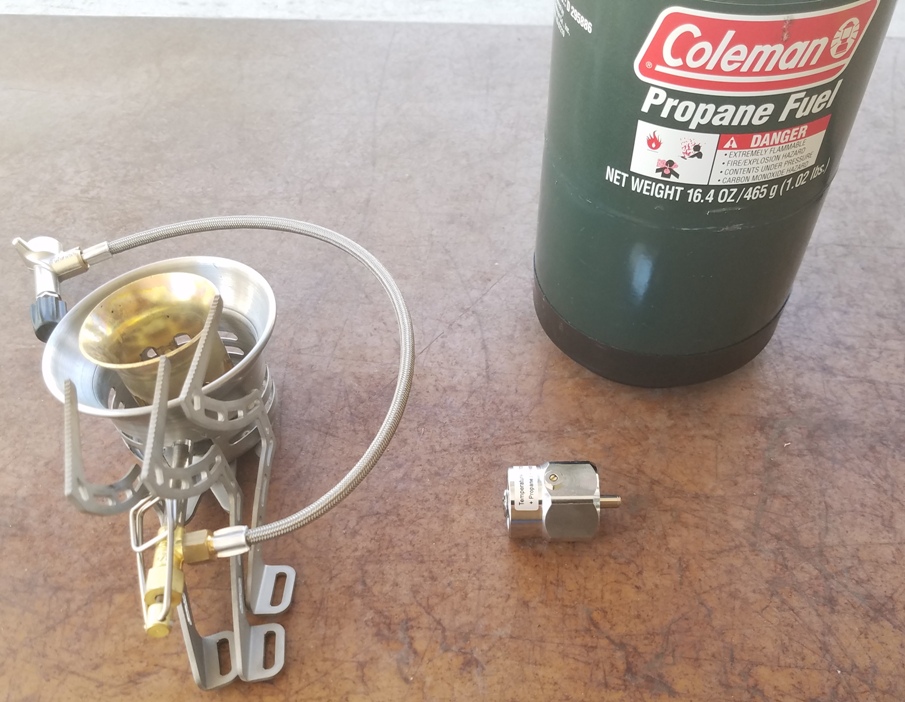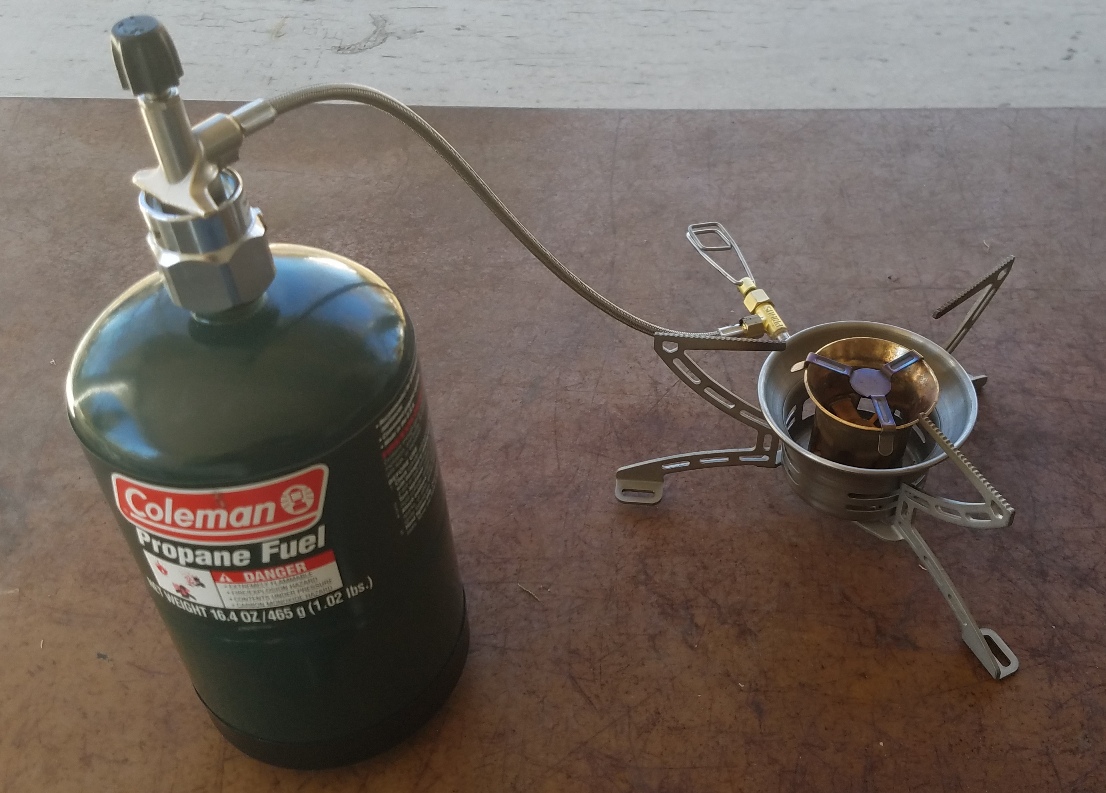You know ’em, you love ’em, you want ’em – 10/22 mags!
——————————-
I’ve been watching the news from Puerto Rico (PR) with some interest. PR is fascinating because, since it is an island, you can’t just have the Tenessee National Guard roll in with a convoy of MRE’s and fuel tankers. PR is, in many ways, cut off from easily-transportable aid. While places like San Juan get all the press, much of the island (especially the interior) is quite..uhm…Third World-ish…in many ways. Those regions will likely be the last to get the power back on.
Anyway, without electricity and regular propane deliveries your options for cooking start to get pretty thin. Burning some trees is reliable, but not terribly convenient. Maybe you have gasoline, but that would be more useful for the vehicle and generators, kerosene maybe?
If you drew a Venn diagram of ‘gear optimized for backpacking’ and ‘gear of great use to survivalists’, the common crossover point would have this little geegaw.

Turns out, there’s an adapter to allow you to hook up the ubiquitous one-pound propane bottles so they can be used with your backpacking stove. Let’s order one up!
Seems like pretty sturdy construction. I’ll probably order another one or two as spares. So, first things first – change the jet orifice in the stove from the one used for kerosene to the one used for butane/propane. That took all of a minute using the supplied tool that came with the stove. Next, I pulled a 20-year-old bottle of propane out of storage and securely screwed the adapter onto it. After that, I threaded the fuel line from the stove onto the adapter. Made sure the valve on the adapter was open, opened the fuel valve on the stove, lit it, and – voila – flame and heat. Noise-wise, it’s about as noisy as any other pressurized fuel backpacking stove…youre not going to be the stealthiest thing in the woods. The simmer was quite good and quite though and at lower levels of output it was much quieter.
 Now, I keep several fuels on hand..propane, kerosene, gasoline, and a small amount of white gas. With this adapter, my Primus stove can run all of those. And, just for the sake of convenience and completeness, I’ll probably pick up a dozen butane cartridges as well just to round things out. Come the time I need to cook something (or boil water) I’ll have no less than five different options for getting the job done.
Now, I keep several fuels on hand..propane, kerosene, gasoline, and a small amount of white gas. With this adapter, my Primus stove can run all of those. And, just for the sake of convenience and completeness, I’ll probably pick up a dozen butane cartridges as well just to round things out. Come the time I need to cook something (or boil water) I’ll have no less than five different options for getting the job done.
 If you have one of those backpacking stoves (or lanterns) that take the small cartridges, you may want to investigate getting a couple of these adapters. Given the easy storage and versatility of 1# propane bottles, it would be an excellent option to have available.
If you have one of those backpacking stoves (or lanterns) that take the small cartridges, you may want to investigate getting a couple of these adapters. Given the easy storage and versatility of 1# propane bottles, it would be an excellent option to have available.
While I have other stove options, including an ancient Coleman Peak1 that I’ve hauled around for damn near 30 years, the Primus has the advantage of being one stove that covers virtually every fuel choice that i might come across. For the person who doesn’t know where the or what the next fuel source will be, the Optimus is a nice choice and this little adapter makes it even more useful. Win – win.
As an aside, I had no problems with the stove or adapter but I did have trouble with the propane bottle itself. When I unscrewed the adapter from the propane bottle, the bottle did not seal properly and propane would leak out. Fortunately, I just screwed a different device into the bottle to act as a plug, but I need to investigate that sort of thing. In a crisis, I’d simply leave the adapter attached if the bottle wouldn’t seal properly when it was removed.

where did you buy the adapter for your stove?
Well, in the post I say “Let’s order one up!” and immediately after that there is a link to Amazon, soooooooo………………
Google Chrome with uBlock Origin 1.14.12 blocks the image link to Amazon.
Larry,
The link didn’t show for me in Opera until I turned of AdBlocker. This is the first time I have had that happen on Zero’s site.
My adblocker blocked it on firefox, too. First time I’ve encountered this on Zero’s site.
How about antimatter?
How about it?
Harbor freight sells a little adaptor to fill the 1 lb tanks from a 20lb tank. They work ok but you don’t get a full fill. When I lived in my camper for 2 winters I used these in a buddy heater until I got a big 20lb tank adapter.
https://m.harborfreight.com/propane-bottle-refill-kit-61555.html?utm_referrer=direct%2Fnot%20provided
Great info Zero. You might also want to investigate a Solo Stove. Really well built, portable and light. This thing burns any wood combustible ( think sticks, pine cones, etc. ) and gets water to boil very quickly. Uses the chimney effect heating. The nice thing is if you are hiking or camping you don’t have to lug around fuel. You just scavenge it.
I have one sitting here on my desk. Just haven’t gotten around to playing with it yet.
Thanks for the tip. I might have to pick one of those up.
As you found out the problem with small propane and iso-butane canisters is the seals deteriorate and they leak or fail like yours did and won’t reseal. I think you need to rotate them out at some point. A couple of the 1lb bottles stored in a shed were all bad/empty after 10+ years, but some I’ve had in the house that long all seem to be fine. I think the climate had their way with the seals. Iso-butane canisters are known to rust in humid environments, but I’ve never seen it here in the west, then the rust prevents a good connection to the stove and you have a leak next to your open flame.
I bought one of those iso-butane stoves a few years ago and a 10 pack of canisters that are sitting in my hall closet. Never thought about rust on the seal face of the can and it causing a leak. Will check them for rust. I wonder if rubbing a little gun oil on the seal face and perhaps sealing them in an airtight container with a desiccant pack or two would work.
I’ve been using iso-butane stoves for around 25 years and have only had one leak on me and that was after I’d used about half of the canister so I might have damaged it somehow.
Thank you for the post, will be adding a couple to our cool kits.
Yes, just take my money! Haha. Actually though looks like a great idea to add to the gear.